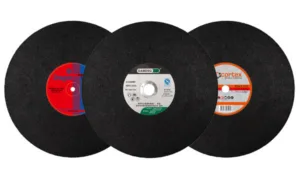Safety is paramount when working with abrasive wheels, and there are several rules and guidelines that should be followed to ensure safe and effective use. These rules help prevent accidents and injuries. Here are some essential rules for working with abrasive wheels:
1. Training and Competence:
Only trained and competent personnel should use abrasive wheels.
Ensure that operators are familiar with the specific type of abrasive wheel they are using and the associated hazards.
2. Inspection and Maintenance:
Inspect abrasive wheels before use to check for any visible damage, such as cracks or signs of wear. Do not use damaged wheels.
Ensure that abrasive wheel equipment is properly maintained and regularly inspected.
3. Guarding:
Abrasive wheel equipment should have appropriate guards in place to protect operators from sparks, debris, and contact with the wheel. Never remove or disable guards.
4. Mounting and Balancing:
Always ensure that abrasive wheels are securely and properly mounted on the equipment. Follow the manufacturer’s instructions for mounting.
Balance the wheel to prevent vibrations and ensure even wear. Unbalanced wheels can lead to accidents.
5. Speed Ratings:
Operate abrasive wheels at the specified maximum operating speed indicated on the wheel and the equipment’s speed rating.
6. Use the Right Wheel:
Select the appropriate abrasive wheel for the material and task. Using the wrong wheel can be dangerous and lead to accidents.
7. Protective Gear:
Wear appropriate personal protective equipment (PPE), including safety goggles or a face shield, hearing protection, gloves, and a dust mask or respirator, as required.
8. Workpiece Clamping:
Ensure that the workpiece is securely clamped or held in place to prevent it from moving during operation.
9. Direction of Rotation:
Make sure the abrasive wheel rotates in the correct direction as indicated by the arrow on the wheel.
10. No Horseplay:
Do not engage in horseplay or distractions while operating abrasive wheel equipment.
11. Handling and Storage:
Handle abrasive wheels with care to prevent damage. Store them in a dry and cool environment to avoid moisture damage.
12. Safe Distance:
Maintain a safe distance from the abrasive wheel while it is in operation. Do not stand directly in front of or in line with the wheel’s path.
13. Emergency Procedures:
Be familiar with emergency procedures and know how to shut off the equipment quickly in case of an emergency.
14. Training and Supervision:
New operators should receive proper training and supervision until they are competent in using abrasive wheels safely.
15. Reporting and Investigating Incidents:
Report any accidents, near misses, or equipment issues immediately. Investigate incidents to identify the cause and take corrective actions.
By adhering to these rules and guidelines, individuals can minimize the risks associated with working with abrasive wheels and ensure a safer working environment. Always consult the manufacturer’s instructions and applicable safety regulations in your region for specific requirements related to abrasive wheel use.




